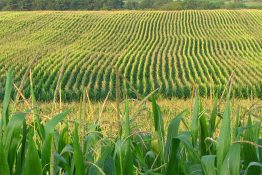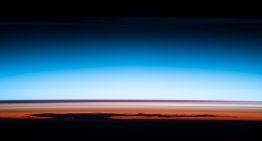In this episode of FieldSound, KOMO 4 Chief Meteorologist Shannon O’Donnell and University of Washington students speak about the formation of the UW Dawgcast, born out of ATM S 493: Media & Meteorology in the UW Department of Atmospheric Sciences. ATM S 493, which launched in 2020, is the first broadcast meteorology class offered on the West Coast. With it, the UW joins Pennsylvania State University and Mississippi State University as schools that offer broadcast meteorology instruction.
Read more »Q&A: Finding varieties of corn that are adapted to future climates
Corn is one of the planet’s most important crops. It not only provides sweet kernels to flavor many dishes, but it’s also used in oils, as a sweetener syrup, and as a feed crop for livestock. Corn has been bred to maximize its yield on farms around the world. But what will happen under climate change? Research led by the University of Washington combined climate projections with plant models to determine what combination of traits might be best adapted to future climates.
Read the full Q&A on UW News »UW atmospheric scientist participating in field campaign to improve Western snowfall, drought forecasts
University of Washington atmospheric scientist Lynn McMurdie has led campaigns to measure rain and snowfall in places ranging from Washington’s Olympic Peninsula to Argentina to the Eastern U.S. Now she’s among the leaders of a field campaign in Colorado to better understand and forecast snowfall in the mountains of the Western U.S. A scientific expedition this coming winter in Colorado’s Yampa Valley will improve forecasts of snowfall and estimates of how climate change will impact snowpack and water availability in mountainous regions of the West.
Read more at UW News »UW-led project to study ozone, atmospheric layers a finalist for next-generation NASA satellite
A project led by the University of Washington to better understand our atmosphere’s complexity is a finalist for NASA’s next generation of Earth-observing satellites. The space agency this week announced the projects that will each receive $5 million to advance to the next stage and conduct a one-year concept study. STRIVE seeks to better understand the troposphere that we inhabit and the stratosphere above it, where the ozone layer is, as well as the interface where these two layers meet.
Read more at UW News »Atmospheric Sciences' Qiang Fu elected to National Academy of Sciences
The National Academy of Sciences announced this week that a University of Washington atmospheric scientist and biologist have been elected as new members, in recognition of their distinguished and continuing achievements in original research. In total, there are 120 members in the U.S. and 24 international members added to the academy this year. They bring the total number of active U.S.
Read more at UW Today »





